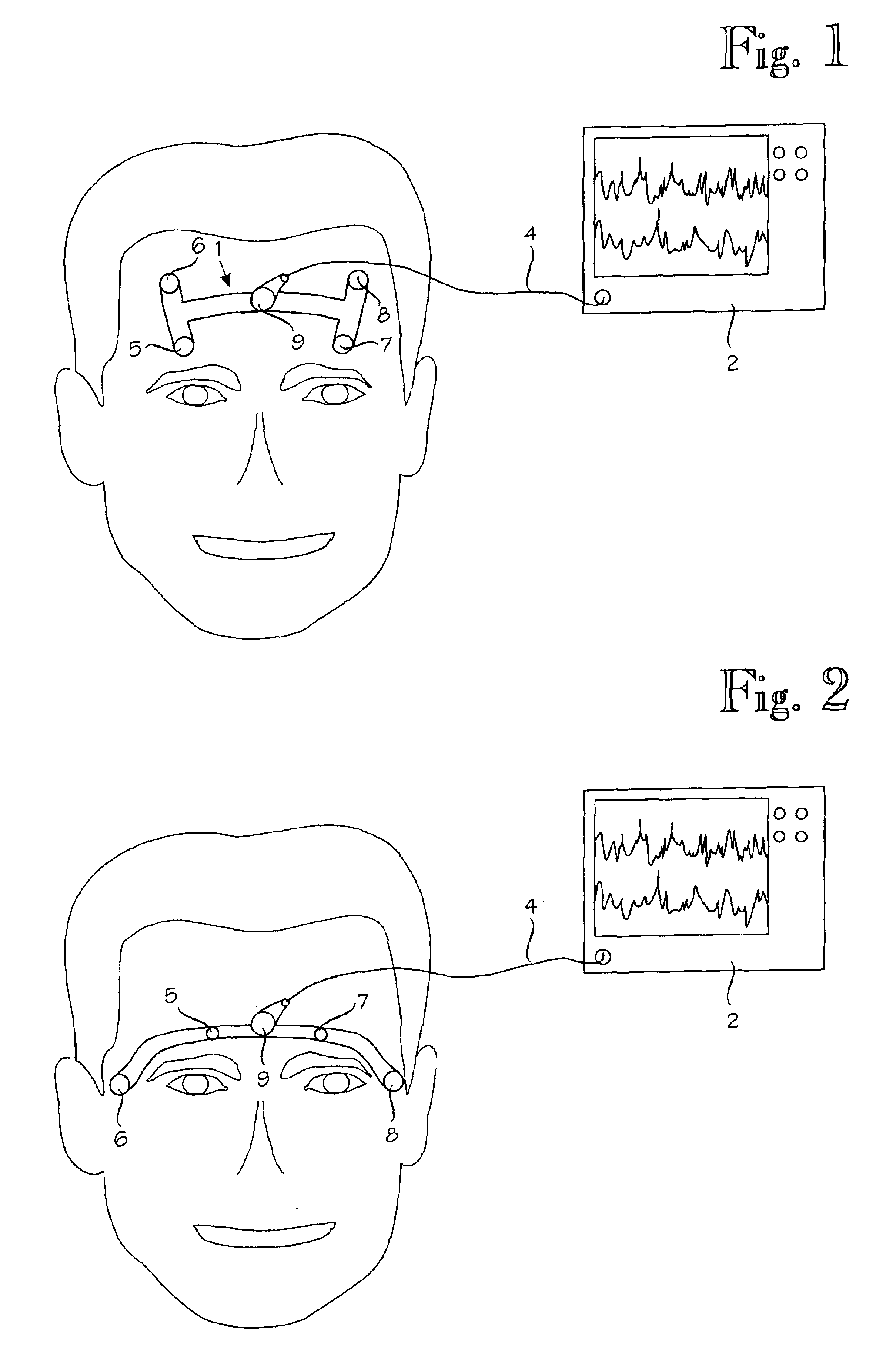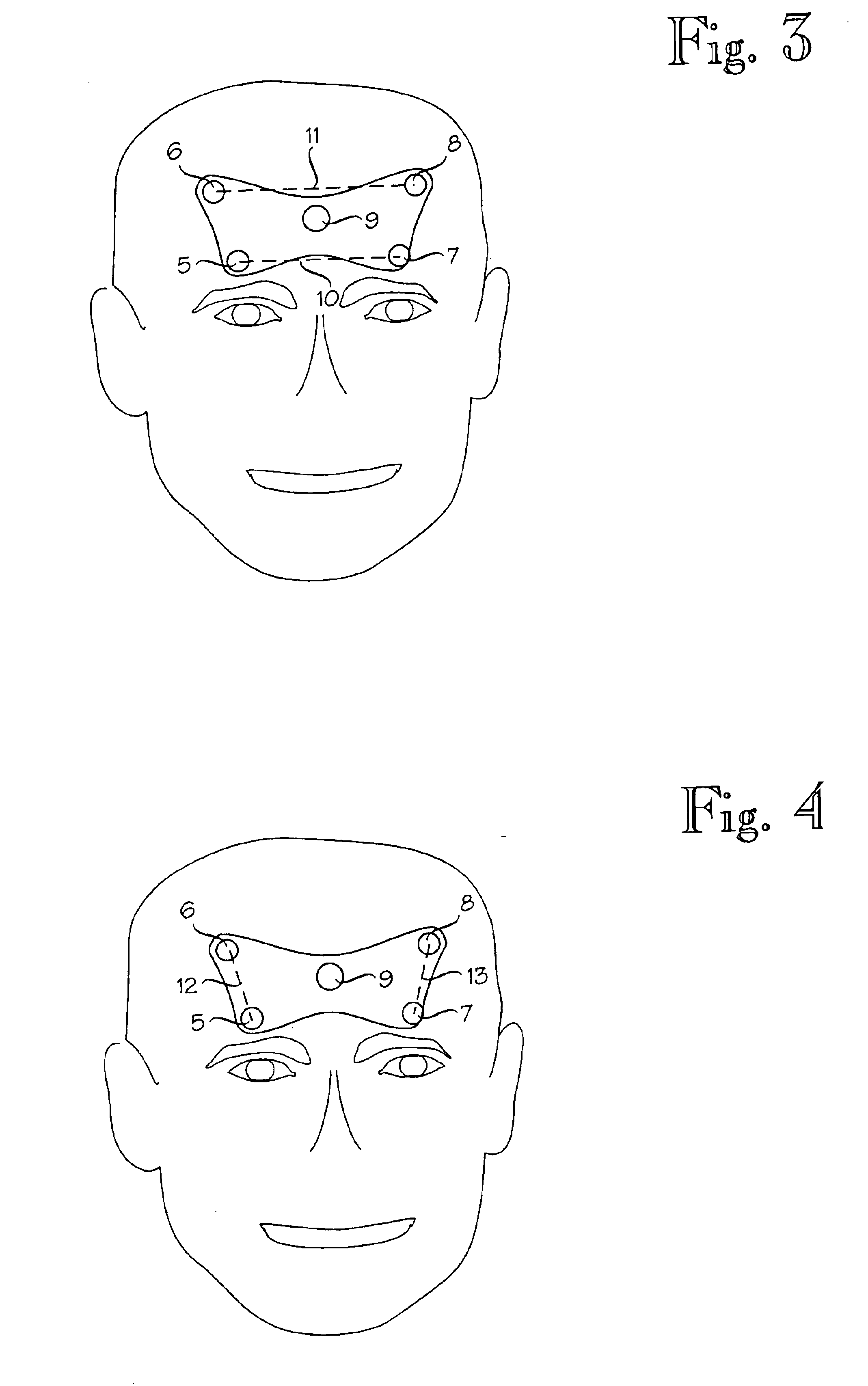Method of positioning electrodes for central nervous system monitoring
- Summary
- Abstract
- Description
- Claims
- Application Information
AI Technical Summary
Benefits of technology
Problems solved by technology
Method used
Image
Examples
third embodiment
[0036]According to the basic idea of the invention it is also possible to combine the embodiments of FIG. 1 and FIG. 2. This combination, ie. the invention is shown in FIG. 6. In FIG. 6 corresponding details in different embodiments have been marked with same reference numerals as in FIGS. 1 and 2. In this embodiment the first electrode, the third electrode and the fifth electrode (ground electrode) are marked with the same reference numerals as in FIGS. 1 and 2. Said electrodes 5, 7 and 9 are placed in the same way as described in connection with FIG. 1.
[0037]The embodiment shown in FIG. 6 uses an array of seven electrodes. Location of the electrodes are those described in connection with. FIGS. 1 and 2. In the embodiment shown the second electrode is marked with a reference number 6a and the sixth electrode is marked with a reference number 6b. The fourth electrode is marked with a reference number 8a and the seventh electrode is marked with a reference number 8b. The second elect...
second embodiment
[0038]The seven-electrode system described above and shown in FIG. 6 offers different montages to measure biopotential signals from the patient. It is easy to understand that this embodiment offers the montages already discussed in connection with the embodiments of FIGS. 1 and 2. The main advantage of the embodiment of FIG. 6 is that it offers all of the benefits discussed with the embodiments of FIGS. 1 and 2 simultaneously, switching between montages is not necessary needed. FIG. 7 shows one possible montage in phantom lines. Bipolar montage between electrodes 6a and 8a is used to measure EEG. Bipolar montages between electrodes 5 and 6b and between electrodes 7 and 8b are used to measure EMG and eye movements and to identify nonsymmetries between hemispheres. FIG. 8 shows another possible montage in phantom lines. Bipolar montage between electrodes 5 and 7 is used to measure EMG. Bipolar montages between electrodes 6a and 6b and between electrodes 8a and 8b are used to measure E...
PUM
 Login to View More
Login to View More Abstract
Description
Claims
Application Information
 Login to View More
Login to View More - R&D
- Intellectual Property
- Life Sciences
- Materials
- Tech Scout
- Unparalleled Data Quality
- Higher Quality Content
- 60% Fewer Hallucinations
Browse by: Latest US Patents, China's latest patents, Technical Efficacy Thesaurus, Application Domain, Technology Topic, Popular Technical Reports.
© 2025 PatSnap. All rights reserved.Legal|Privacy policy|Modern Slavery Act Transparency Statement|Sitemap|About US| Contact US: help@patsnap.com



